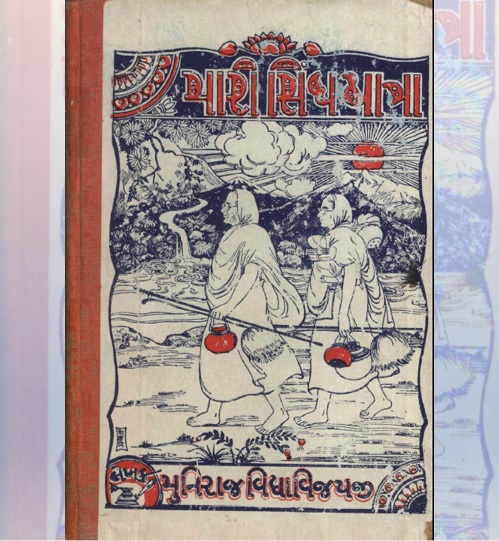
The credit of many schools and institutes in the field of education that exist in Karachi can be attributed to the Gujarati community
[Editor’s Note: This is Part 26 (Gujaratis of Karachi – Part – 3) of a series of articles based on a pre-partition book named “મારી સિંધ યાત્રા” (“منهنجي سنڌ جو سفر”) in Gujarati authored by a scholarly Jain sadhu Shri Vidyavijayji, narrating his experiences of Journey and his Stay in Karachi for about 2 and a half years between 1937 and 1939. It would be advisable to click on the Introductory Article and read it to better understand the series. – Nasir Aijaz, Editor Sindh Courier]
Vimal Shah, Mumbai
Gujarati Educational Institutions
The credit of many schools and institutes in the field of education that exist in Karachi can be attributed to the Gujarati community. It is almost impossible to list down the schools giving primary education. There are mainly four schools, particularly high schools in Karachi under the management of Gujaratis that grab attention of people.
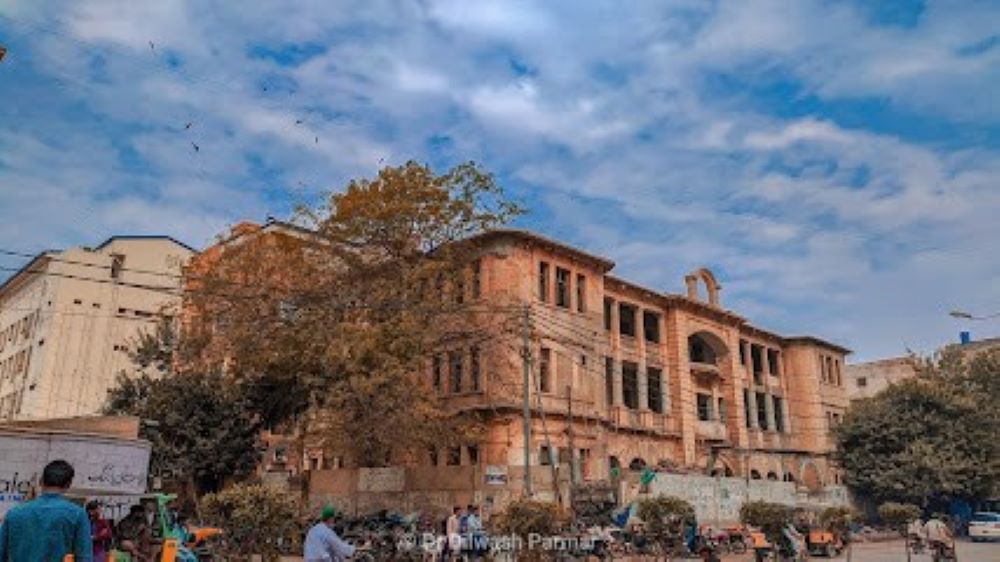
- Haribhai Pragji Karia High School: The ‘Union School’ of one time established by the popular education lover of Karachi, Bhai M.B. Dalal on 2-10-1930 is known as ‘Shri Haribhai Pragji Karia School’ these days. About 500 students are studying in this school. A committee has been formed for managing the school, which consists of renowned people of Karachi – Ray Saheb Bhagwanji Morarji, Bhai Hiralal Ganatra, Shri M.B. Dalal, and others. The management of this school implement new schemes for the physical as well as mental development of the students at the institute. Bhai Bhupatray Dave, popularly known as ‘King of Physical Culture’ – in not only in Karachi, but the entire Gujarati world has been appointed so that the students can be developed stronger and healthier through ancient practices like ‘Pranayam’ and ‘Aasan’. Likewise, a music class has been started by appointing a good musician. Everyone is hoping that the institute would turn more progressive than it is at present, since a popular educationist Gaurishankar Anjaria has been appointed as the principal.
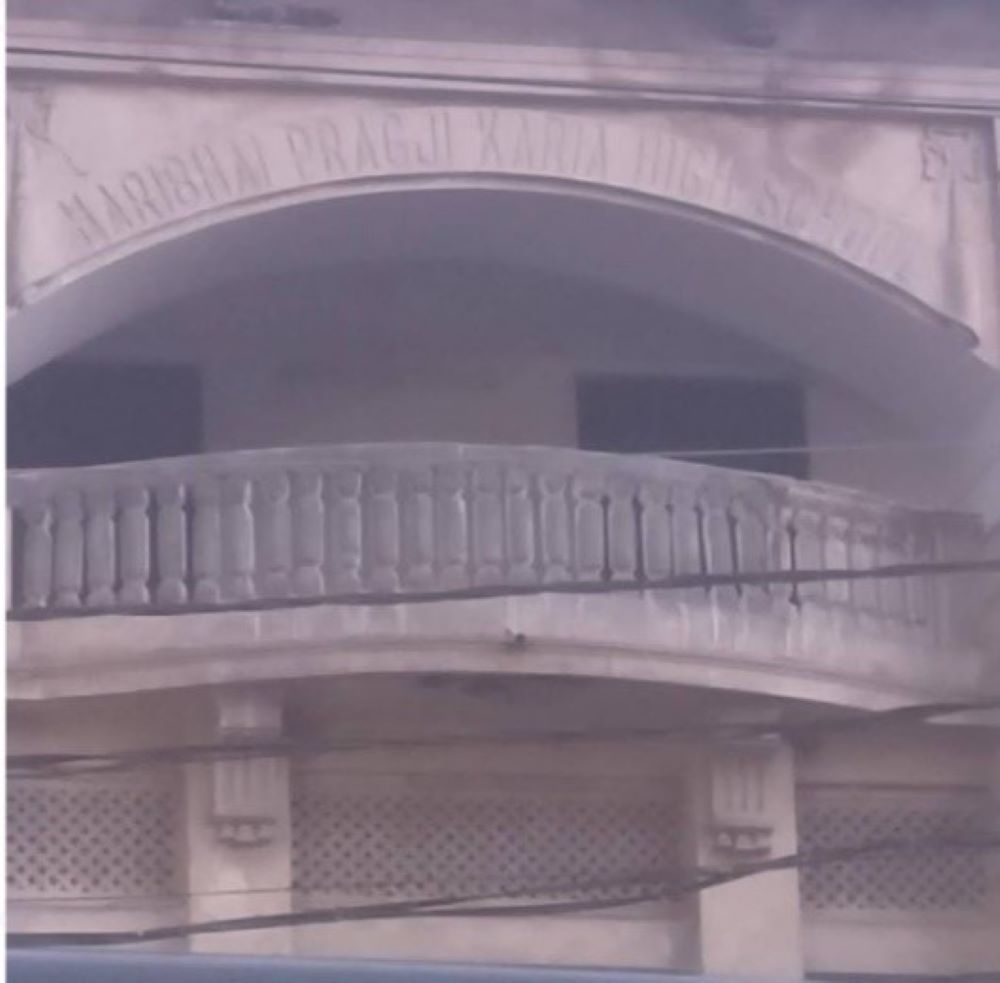 [Note by Vimal Shah: The school had moved out of the building after partition. The school building situated at the Deli Colony, Chand Bibi Road, Ranchore Line, Karachi was declared protected in 1996 under the Sindh Cultural Heritage Preservation Act. There’s a road named ‘M.B.Dalal Street’ in Ramswami, Karachi.]
[Note by Vimal Shah: The school had moved out of the building after partition. The school building situated at the Deli Colony, Chand Bibi Road, Ranchore Line, Karachi was declared protected in 1996 under the Sindh Cultural Heritage Preservation Act. There’s a road named ‘M.B.Dalal Street’ in Ramswami, Karachi.]
- Gujarat Vidyalay: An organisation named ‘Gujarati Education Society’ was established in 1926 with the efforts of learned people like Shri Chandrashankar Buch, Dhirajlal Vyas, Shri Gaurishankar Anjaria and others. The organisation used to run a school named ‘Karachi Middle School’. This small school developed into a High School in 1930. It is the result of generous donation of rupees twenty thousand each by popular Gujarati citizens of Karachi Sheth Manilal Mohanlal and Sheth Manubhai Dungarshi Joshi that this school owns an elegant building of its own. A girl’s school named ‘Mahila Vidyalay’ also runs along with this school. There are about 750 students studying in the Vidyalay and about 200 to 250 girls are studying in the ‘Mahila Vidyalay’ today.
Sometime back one such good institute was dragged into the controversy of tussle of power. Such a large institute was about to be razed in the tussle of power between the management and teachers. At that time the wise people of Karachi used to think more about the culture of certain modern educationists who think that ‘they are everything’ than the existential crisis of the institute. People used to say that the fury on this institute was an echo of the demonstration of ‘literacy’ by certain ‘literates’ in the 13th session of the ‘Gujarati Sahitya Parishad’ last year. And when you see some of the literates or teachers who as such are responsible for shaping the future of children and give sermons to people through their articles and compositions, indulging in undue activities as compared to usual human behaviour, it’s as if ‘Water is fuelling the fire’. And common people regret it. And finally, wisdom of the wise people worked to put things to rest.
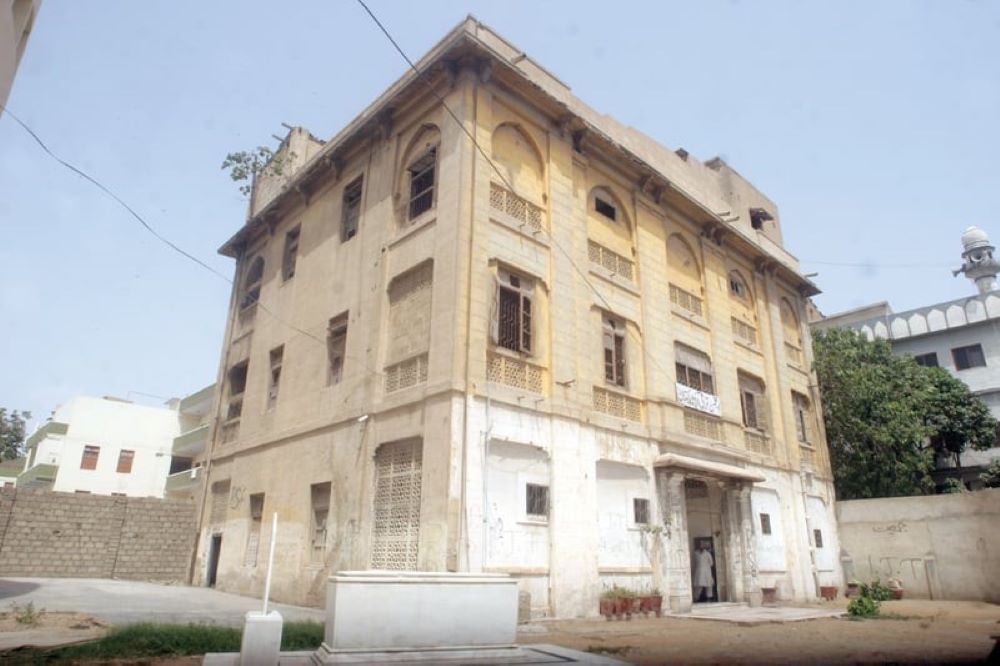
- Shri Sharada Mandir: On 9th April 1921, with heartfelt feelings of Bhai Mansukhlal Jobanputra an institute named ‘Bharat Saraswati Mandir’ was established without any permanent place or resources. Later with gradual progress, in 1938 the management of this institute began their endeavour to provide secondary school education to girls as well. Today this institute as well has its own independent building. Bhai Mansukhlal Jobanputra is managing everything like the ‘Soul’ of this institute. Some generous people of Karachi like Bhai Jamshed Mehta, Sheth Haridas Lalji, Sheth Bhagwandas Ranchordas, and others are nurturing this institute.
The building of ‘Sharada Mandir’ resembles our old Aashrams. The environment over there is always peaceful. The institute encourages innovative ideas beneficial for students with respect to Physical Training, Music, and other such subjects. Outwardly this activity of the institute looks like promoting national spirit. Inwardly the result is just like any other government school. The well-wishers of this institute want it to be a ‘National Academy’ and give up the ‘Coeducation’ system – these two things at any cost. The nation would be fortunate if it happens.
[Note by Vimal Shah: In the heart of Karachi, a ramshackle three-storey edifice, adjacent to the Federal Urdu University of Arts, Science and Technology (FUUAST) ‘Maulvi Abdul Haq’ campus, exudes a strong sense of history within its crumbling walls. Shri Sharada Mandir rose to national stature and was considered as one of the country’s best – whose foundation stone was laid by Mohandas Karamchand Gandhi in 1921. At the time of the partition, Gandhi had expressed his desire that the Sharda Mandir should continue its services in India, following which the institute was restructured as the Shri Shardagram, established near Mangrol in the Junagadh district of Gujarat in April, 1949, claimed the managing trustee of the Shri Shardagram Prof JG Bhuva.]
- Mahaveer Vidyalay: This institute can also be placed in the same row as the above institutes. This institute was born on the 13th April of 1933. This institute gives education up to the 5th standard in English medium. The institute aims to give education to all the Gujarati students irrespective of their caste or creed. We have heard that they are going to introduce the 6th and the 7th standards from this year. The principal of the institute, Shri Motichand Shah is a gentle, humble, and experienced person. And the institute is fortunate to get the services of an elderly, knowledgeable, and highly experienced ex-Inspector of the Education Department, Shri Narmadashankar Bhatt Saheb. Everyone wishes that the institute grows into a High School early. It is desirable for the Jai Sangh as well. Municipal Corporators of Karachi, Bhai Khimchand M. Shah and Manilal Laherabhai Mehta are prime administrators of this institute. Both these genelemen are leaders of the Jain Sangh. One is the President of the Sthanakwasi Sangh while the other is the honourable Secretary of the Murtipujak Sangh. They are religious and well cultured people. If they put in some more efforts, this institute can be a feather in the cap of the Karachi Jain Sangh.
[Note by Vimal Shah: Sthanakwasi and Murtipujak are two different sects of Jainism and Sangh denotes a Congregation of the relevant Jain Community.]
Other Institutions
Apart from the above educational institutes, there are many other instates managed by Gujarati community of Karachi. Apart from the ‘Baal Mandir’ and ‘Baal Vihar’ shaping the future of kids, the Gujaratis here are developing physical and mental health with ‘Gujarati Club’, ‘Gujarati Gymkhana’ and ‘Vyayam Shala’ (Gymnasium).”
Additionally, they are trying to support the economic condition of the middle class with ‘Bank’ and ‘Housing Society’. Likewise, Gujarati women are trying to eliminate the inadequacies and difficulties of the women through ‘Gujarati Mahila Samaj’ and ‘Gujarati Bhagini Samaj’. The activities of women organisations are being managed with the emotions, love, and constant hard work by Manek bahen Lalchand Panachand, Rambha bahen Ganatra, Samju bahen Chotalal Khetshi, and Ganga bahen. These women being elderly, experienced, capable of facing the difficulties and affluent they take the lead in protecting the interests of women. The women managing the ‘Bhagini Samaj’ too work for the promotion of linguistic literacy of women, and activities like sewing and knitting. Established among the top Panjrapol of Hindustan and earning the blessings of lakhs of cattle – the ‘Panjrapol’ of Karachi is too thankful to the constant efforts of Shri Dungarshi Maharaj and other affluent and kind-hearted Gujarati gentlemen. (Continues – Read the Part-27 on Sunday Aug 6, 2023)
Click here for Part-I, Part-II, Part-III, Part-IV, Part-V , Part-VI , Part-VII , Part-VIII , Part-IX, Part-X, Part-XI, Part-XII, Part-XIII , Part-XIV, Part-XV, Part-XVI , Part-XVII, Part-XVIII , Part-XIX, Part-XX, Part-XXI, Part-XXII , Part-XXIII , Part-XXIV, Part-XXV
_________________
About the contributor of the series of Articles based on the book
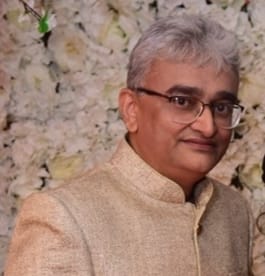 Vimal Shah is a follower of Jainism by birth and is based in Mumbai, India. He is a Computer Engineer and holds a Diploma in Jainology from Mumbai University. He has an immense interest in reading, writing, studying, and teaching Jain Philosophical subjects. He conducts classroom as well as online sessions on Jain Philosophical courses. He continues to study various subjects and remains a student of Jain Philosophy. He has significantly contributed to the Translation Project of the ‘Compendium of Jainism’ from English to Gujarati – an initiative of the JAINA India Foundation. He is also associated with a Project for the translation of Jain Aagams (Scriptures) from Gujarati to English. He has a special interest in the history and preservation of the Jain Heritage in Pakistan. He was part of a Delegation of the Jain Heritage Foundation, New Delhi that visited various Jain Heritage Sites in Pakistan in May-2023.
Vimal Shah is a follower of Jainism by birth and is based in Mumbai, India. He is a Computer Engineer and holds a Diploma in Jainology from Mumbai University. He has an immense interest in reading, writing, studying, and teaching Jain Philosophical subjects. He conducts classroom as well as online sessions on Jain Philosophical courses. He continues to study various subjects and remains a student of Jain Philosophy. He has significantly contributed to the Translation Project of the ‘Compendium of Jainism’ from English to Gujarati – an initiative of the JAINA India Foundation. He is also associated with a Project for the translation of Jain Aagams (Scriptures) from Gujarati to English. He has a special interest in the history and preservation of the Jain Heritage in Pakistan. He was part of a Delegation of the Jain Heritage Foundation, New Delhi that visited various Jain Heritage Sites in Pakistan in May-2023.